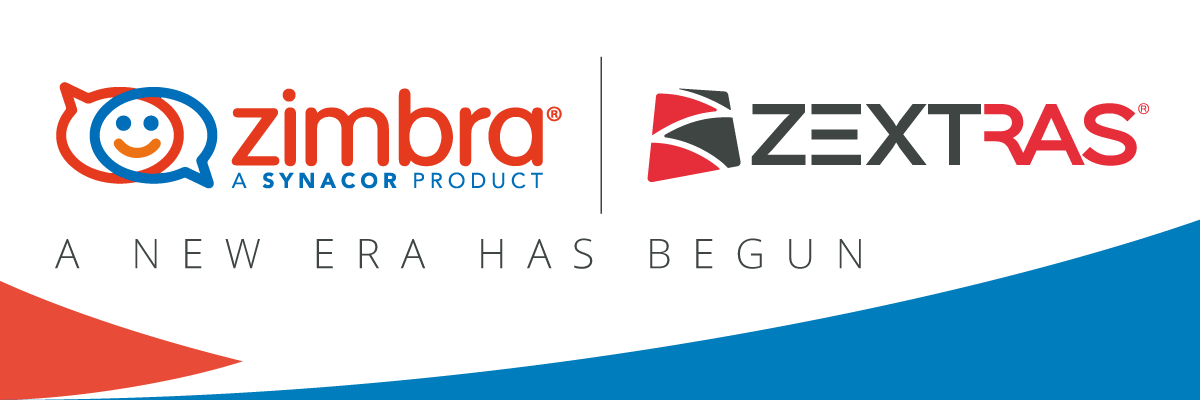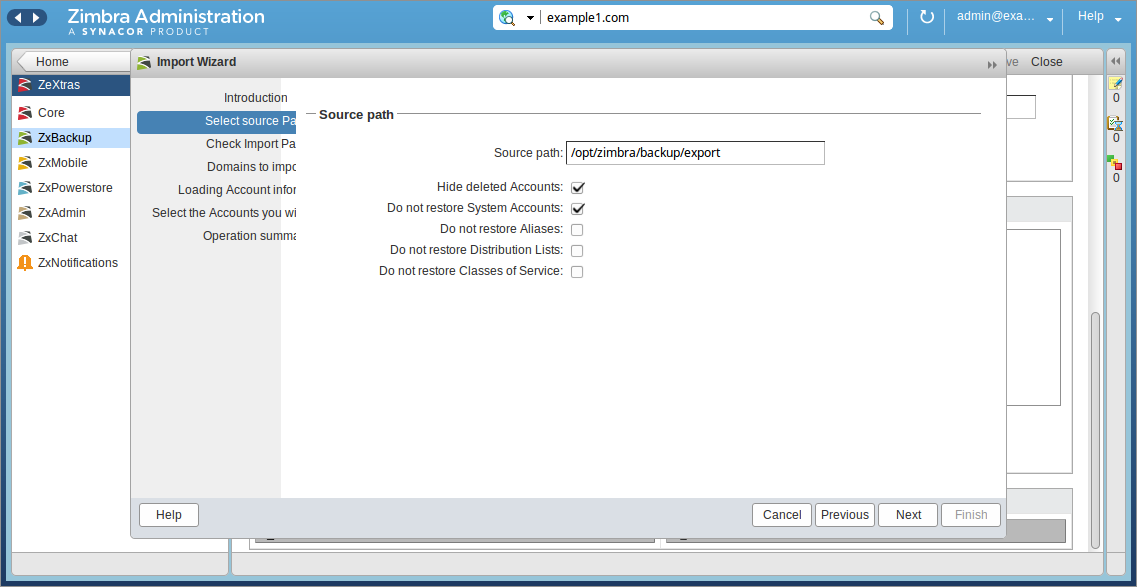Even a fire is not an obstacle, or Zimbra speed recovery after a disaster
In the last article, readers asked us to tell more about how the restoration of Zimbra works after the failure of server hardware or even its physical destruction. Therefore, now we will talk about how this process is going on and share a number of techniques thanks to which the whole process will take you a few minutes.

So, something really bad has happened to your server running the Zimbra Collaboration Suite. It is not so important whether it was a fire or a flood. It is important that the work at the enterprise got up and within a few minutes the enterprise will start losing money due to this idle time. This means that the time has come to urgently start restoring the performance of the Zimbra Collaboration Suite.
')
Recovery in case of emergency consists of three stages: first you need to find a suitable physical or virtual server on which you will deploy Zimbra, then you need to install the operating system and install the Zimbra Collaboration Suite itself, and then roll back the data to the installed ZCS.
An experienced IT manager will immediately note that the first two stages only seem to be lengthy, but in fact they can be easily optimized if you have a server ready for commissioning with the Linux, Zimbra Suite and Zextras Suite onboard of the corresponding versions in reserve. In this case, the execution of the first two stages may take only a few minutes, which are required to turn on the server and change the DNS records. In any case, you can find detailed instructions on installing the Zimbra Collaboration Suite on Ubuntu in one of our previous articles.
Optimize the third stage will help zimlet Zextras Backup, which is part of the Zextras Suite. It allows you to quickly restore data from backups. For example, if the backups created by the real-time scanner were stored on a separate disk or cloud on the old server, you can simply mount it to the backup server and restore all data from it. Recall that the real-time scanner is one of the main features of Zextras Backup and due to deep integration with Zimbra can track changes in server logs and instantly back up all changed files, creating incremental backups, and using the most common rsync you can synchronize backup data with storage located in a safe place. Thanks to this copying mechanism, you most likely will not lose data at all as a result of an abnormal situation on the server with Zimbra.

Note that when creating a backup, Zextras Backup also reserves global Zimbra settings, as well as server settings. However, with automatic recovery from backup, these parameters do not apply. In other words, if you suddenly needed to create the perfect clone of the old north or apply the same settings on the old server to the old server, you will have to use the Zextras command interface and the getServerConfig magic command. For example, the zxsuite backup getserverconfig command standard date last will display the last saved global settings and server settings, and the IT manager will only need to restore them completely, or apply only the necessary ones.
If the IT budget of the enterprise does not allow you to have a backup server for Zimbra ready, then you can always take advantage of the benefits of virtualization, as well as the services of various hosting providers who are ready at any time to lend you a helping hand. You just need to have a container ready for loading into a virtual machine in which you already have Linux installed, as well as the Zimbra Collaboration Suite of the same version as on your “combat server” that has failed. This, of course, will take more time than the simple inclusion of a backup server, but it will also cost much less. In this case, it all depends on how much server downtime with Zimbra is acceptable for your organization. The third stage of recovery will completely repeat the algorithm described earlier.
A good idea would be to conduct some kind of teaching. Since the deployment of Zimbra on the backup machine does not necessarily stop the "combat" server, and certainly not necessarily wait for an emergency, you can try to do it in one of the working days. Such exercises will allow estimating the time it takes to eliminate their consequences, and if the result for some reason does not suit you or your leadership, you can think about developing a more optimal algorithm in case of such incidents.
Thus, with the observance of a number of conditions and precautions, even the physical destruction of the server with Zimbra will not lead to the loss of important data, correspondence and the list of contacts of the enterprise, and also will allow to avoid long idle times.

So, something really bad has happened to your server running the Zimbra Collaboration Suite. It is not so important whether it was a fire or a flood. It is important that the work at the enterprise got up and within a few minutes the enterprise will start losing money due to this idle time. This means that the time has come to urgently start restoring the performance of the Zimbra Collaboration Suite.
')
Recovery in case of emergency consists of three stages: first you need to find a suitable physical or virtual server on which you will deploy Zimbra, then you need to install the operating system and install the Zimbra Collaboration Suite itself, and then roll back the data to the installed ZCS.
An experienced IT manager will immediately note that the first two stages only seem to be lengthy, but in fact they can be easily optimized if you have a server ready for commissioning with the Linux, Zimbra Suite and Zextras Suite onboard of the corresponding versions in reserve. In this case, the execution of the first two stages may take only a few minutes, which are required to turn on the server and change the DNS records. In any case, you can find detailed instructions on installing the Zimbra Collaboration Suite on Ubuntu in one of our previous articles.
Optimize the third stage will help zimlet Zextras Backup, which is part of the Zextras Suite. It allows you to quickly restore data from backups. For example, if the backups created by the real-time scanner were stored on a separate disk or cloud on the old server, you can simply mount it to the backup server and restore all data from it. Recall that the real-time scanner is one of the main features of Zextras Backup and due to deep integration with Zimbra can track changes in server logs and instantly back up all changed files, creating incremental backups, and using the most common rsync you can synchronize backup data with storage located in a safe place. Thanks to this copying mechanism, you most likely will not lose data at all as a result of an abnormal situation on the server with Zimbra.

Note that when creating a backup, Zextras Backup also reserves global Zimbra settings, as well as server settings. However, with automatic recovery from backup, these parameters do not apply. In other words, if you suddenly needed to create the perfect clone of the old north or apply the same settings on the old server to the old server, you will have to use the Zextras command interface and the getServerConfig magic command. For example, the zxsuite backup getserverconfig command standard date last will display the last saved global settings and server settings, and the IT manager will only need to restore them completely, or apply only the necessary ones.
If the IT budget of the enterprise does not allow you to have a backup server for Zimbra ready, then you can always take advantage of the benefits of virtualization, as well as the services of various hosting providers who are ready at any time to lend you a helping hand. You just need to have a container ready for loading into a virtual machine in which you already have Linux installed, as well as the Zimbra Collaboration Suite of the same version as on your “combat server” that has failed. This, of course, will take more time than the simple inclusion of a backup server, but it will also cost much less. In this case, it all depends on how much server downtime with Zimbra is acceptable for your organization. The third stage of recovery will completely repeat the algorithm described earlier.
A good idea would be to conduct some kind of teaching. Since the deployment of Zimbra on the backup machine does not necessarily stop the "combat" server, and certainly not necessarily wait for an emergency, you can try to do it in one of the working days. Such exercises will allow estimating the time it takes to eliminate their consequences, and if the result for some reason does not suit you or your leadership, you can think about developing a more optimal algorithm in case of such incidents.
Thus, with the observance of a number of conditions and precautions, even the physical destruction of the server with Zimbra will not lead to the loss of important data, correspondence and the list of contacts of the enterprise, and also will allow to avoid long idle times.
Source: https://habr.com/ru/post/431098/
All Articles